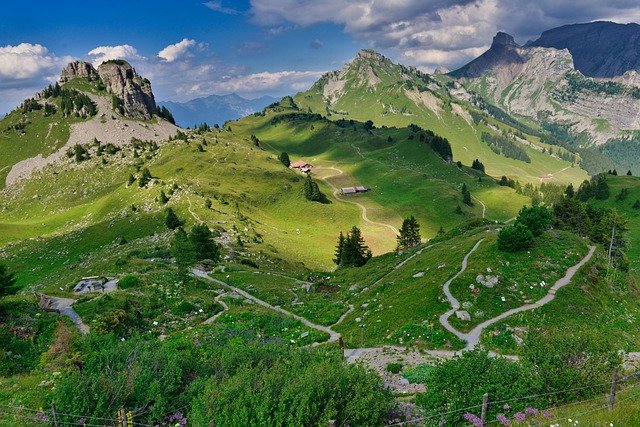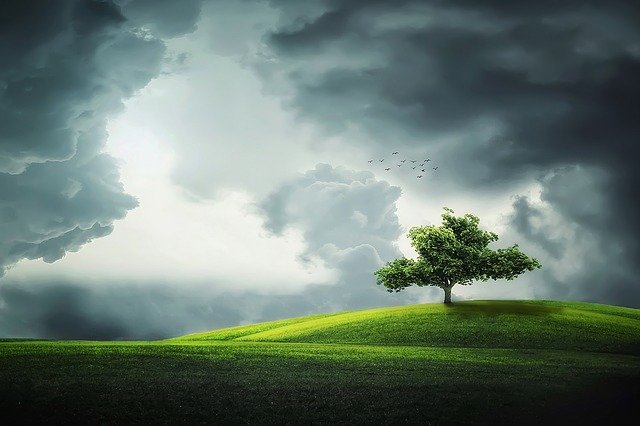Neuroscience research has demonstrated that gratitude is a source of wellness and joy if we choose to practise it on a regular basis. Louie Schwartzberg in his latest film, Gratitude Revealed, identifies a number of pathways that can develop gratitude and appreciation in our lives and lead to health, happiness and lasting joy. Louie – time-lapse photographer, director and producer – takes us on a journey through nature, the eyes of children and lives of insightful people. He comments in a subsequent panel Q & A video that the Gratitude Revealed film contains many wise “one-liners” from inspiring people as well as some stunning cinematography. The music for the film is provided by Lisbeth Scott – singer, songwriter and composer – who Louie interviewed as part of his podcast series.
Pathways to gratitude
Throughout Gratitude Revealed Louie explores different pathways to gratitude with his guests and provides illuminating comments about each pathway, some of which I explore in the following:
- Curiosity – is a basic human attribute that leads us to explore the world around us, the people in our lives and the concepts we encounter in our reading, discussions and games. How often have we seen a toddler pick up a leaf or a stone and examine it, look underneath some branches to see what lies beneath, gaze into pools of water at the seaside to see if there are any living creatures there, or feel the texture of the grass or the ground to judge its softness or hardness? Unfortunately, as we grow older we can lose the art of being inquisitive and curious about things. However, if we can cultivate curiosity, we open ourselves to marvel at the intricacies of things in our environment, the power of our subconscious, the expansiveness of knowledge and the inexhaustible complexity of the human body (including the emerging understanding of the “brain-gut connection” and the heart’s intelligence). Curiosity leads us to explore the ineffable, to seek to understand the mystery of life and to explore relationships with people we encounter. Ultimately, curiosity leads us to appreciate what is and to be grateful for our discoveries as well as our capacity for exploration. Albert Einstein was a strong advocate for curiosity and acknowledged that it lay at the root of his knowledge and wisdom – “The important thing is to never stop questioning. Never lose a holy curiosity”.
- Nature – is a source of wonder and awe which leads us to be grateful that we can perceive its beauty, complexity and interconnectedness through our five senses – what Jon Kabat-Zinn describes in his book, Coming to Our Senses, as our sightscape, soundscape, touchscape, smellscape, and tastescape. Louie encourages us to develop an intimate relationship with nature because nature, and nature imagery, can be incredibly healing and can develop a deep appreciation and gratitude for our interconnectedness and interdependence. Louie’s Wonder and Awe Podcastexplores the intersection of science and art (the “why” of art and the ”how” of science). There are multiple ways to engage with nature including gardening, walking in a rainforest or on a beach and mindful photography – we just have to form the intention to make the most of our natural environment that surrounds us daily.
- Music – cultivates wonder and awe, healing and creativity. Louie highlighted the power of music to transport us beyond the present moment concerns and anxieties and to still the mind. Music taps into our positive emotions and stimulates gratitude for the beauty, variety and nuances of sound. Sound therapy can heal us from trauma and depression and help us to appreciate what we have that is positive in our lives. Mantra meditations can promote calm, peace and stillness of mind and, in the process, open our hearts and minds to the power and energy of the present moment. Music deepens our spirit and helps us to value our lives while expressing gratitude for all that we have.
- Mindfulness – by definition, it involves being fully in the present moment and paying attention to something or someone with openness, curiosity and acceptance of what is. Michael Beckwith reminds us in the movie that we should be “grateful for the challenges in our life” because they help us to realise our potential and develop resilience. Louie suggests that mindfulness “is being present like the film itself” – open to wonder and able to “relish the mysteries of life” that are revealed by paying focused attention in the “now”.
Reflection
None of the pathways I discussed above are discrete – they are overlapping, reinforcing and compounding in nature. Together, these pathways engender appreciation and gratitude and stimulate happiness and joy. Louie and his presenters on Gratitude Revealed highlight the fact that “busyness” in our lives can create a block to gratitude and blind us to what is happening within and around us. In contrast, gratitude blocks out envy and self-absorption. As Louie comments, “Focusing on what we do have, leaves little in your heart for what we don’t have”.
In the film, Brother David Steindl-Rast, developer of gratefulness.org, distinguishes between appreciation and gratitude. He states that appreciation is an in-the-moment experience while gratitude is “what we remember that opens our hearts”. Interestingly, when I am playing tennis, I often internally express appreciation for being able to participate and play a good shot or two. However, after watching Gratitude Revealed, I experienced a real sense of gratitude based on my memory of all the events and experiences that enable me to play social tennis at the age of 76.
In particular, I am grateful for:
- the opportunity to be coached in my teens by a tennis player who had been selected for the Australian Davis Cup Team
- having practised tennis drills and played games of tennis with my brothers and my niece
- having played competitive tennis over 5 years with a team drawn from members of my extended family
- being trained as a sprinter in a GPS school (improved my capacity to move around the tennis court)
- the opportunity to play tennis for my school, for Brisbane ((against Gympie) and for the Queensland Tax Office (in the annual Taxation Intestate Tennis Carnivals)
- being able to play social tennis with a closed group of six quality players over a period in excess of 10 years
- the opportunity to play tennis on different surfaces including bitumen, ant-bed, grass, clay and flexipave
- being able to play socially in Port Moresby, Auckland, Lake Annecy (France) and Boroughbridge (Yorkshire, UK)
- developing a wide range of shots through tennis coaching, practice and competitions, e.g., slice, topspin, back spin, under spin, side spin (out-swinger & in-swinger), volley, one-handed and two-handed backhand, half volley, drive volley, drop shot, lob, smash and, recently, half-volley drop shot
- being able to play social tennis with an open group in my 50’s, 60’s and 70’s (now)
- discovering the benefits of Tai Chi and how it improves my tennis game.
As we grow in mindfulness and gratitude, we enrich our lives, deepen our happiness and joy and build our resilience and capacity for creative endeavour. Music and nature can inspire us if we are fully present to experiencing them and our natural curiosity can open our hearts to appreciating whatever we experience.
__________________________________
Image by allPhoto Bangkok from Pixabay
By Ron Passfield – Copyright (Creative Commons license, Attribution–Non Commercial–No Derivatives)
Disclosure: If you purchase a product through this site, I may earn a commission which will help to pay for the site, the associated Meetup group, and the resources to support the blog.


